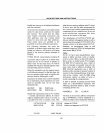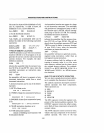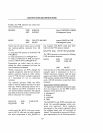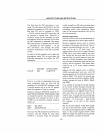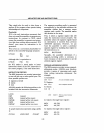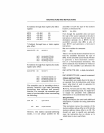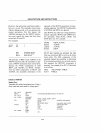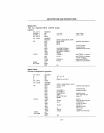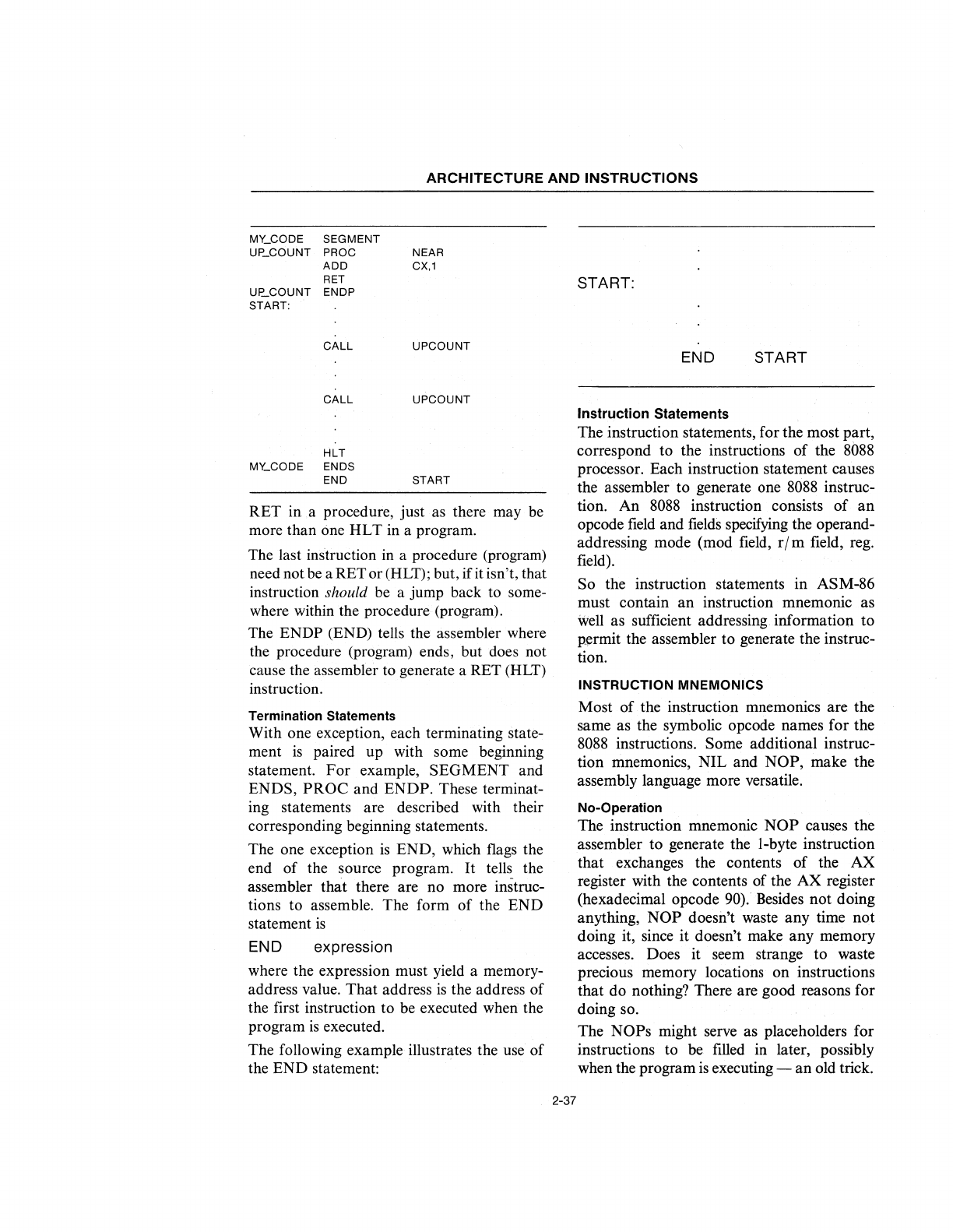
ARCHITECTURE AND INSTRUCTIONS
MY_CODE
SEGMENT
UP_COUNT PROC
ADD
RET
U~COUNT
ENDP
START:
CALL
CALL
HLT
MY_CODE ENDS
END
NEAR
CX,1
UPCOUNT
UPCOUNT
START
RET in a procedure, just as there may be
more than
cine
HL
T in a program.
The last instruction
in
a procedure (program)
need not be a RET or (HLT); but, if it isn't, that
instruction
should be a jump back to some-
where within the procedure (program).
The
ENDP (END) tells the assembler where
the procedure (program) ends, but does not
cause the assembler to generate a RET (HLT)
instruction.
Termination Statements
With one exception, each terminating state-
ment
is
paired up with some beginning
statement.
For
example, SEGMENT and
ENDS,
PROe
and ENDP. These terminat-
ing statements are described with their
corresponding beginning statements.
The one exception
is
END, which flags the
end of the source program.
It
tells the
assembler that there are no more instruc-
tions to assemble. The form of the END
statement
is
END
expression
where the expression must yield a memory-
address value. That address
is
the address of
the first instruction to be executed when the
program
is
executed.
The following example illustrates the use of
the END statement:
2-37
START:
END
START
Instruction Statements
The instruction statements, for the most part,
correspond to the instructions of the
8088
processor. Each instruction statement causes
the assembler to generate one
8088
instruc-
titm. An
8088
instruction consists of
an
opcode
field
and
fields
specifying the operand-
addressing mode (mod field,
rim
field, reg.
field).
So the instruction statements in ASM-86
must contain an instruction mnemonic as
well
as sufficient addressing. information to
p~rmit
the assembler to generate the instruc-
tion.
INSTRUCTION MNEMONICS
Most of the instruction mnemonics are the
same as the symbolic opcode names for the
8088
instructions. Some additional instruc-
tion mnemonics, NIL and
NOP, make the
assembly language more versatile.
No-Operation
The instruction mnemonic
NOP
causes the
assembler to generate the I-byte instruction
that exchanges the contents of the AX
register with the contents of the
AX
register
(hexadecimal opcode
90).
Besides
not
doing
anything,
NOP doesn't waste any time
not
doing it, since it doesn't make any memory
accesses. Does it seem strange to waste
precious memory locations on instructions
that do nothing? There are good reasons for
doing so.
The
NOPs might serve as placeholders for
instructions to be filled in later, possibly
when the program
is
executing - an old trick.



